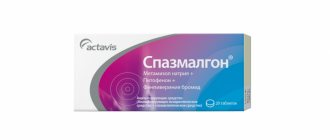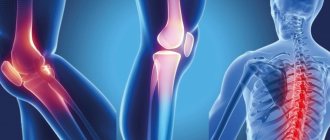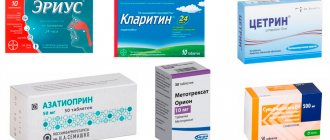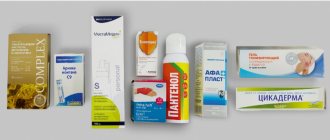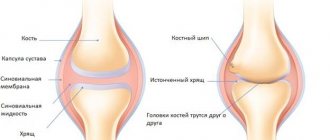Back pain is a common reason for patients to visit a doctor. There are many pathologies characterized by back pain: osteochondrosis, osteoarthritis, rheumatoid arthritis, spinal hernia. Movalis is one of the most effective drugs that can relieve pain.
Active ingredient
The active component of the drug, meloxicam, relieves any inflammation. This has been proven by clinical trials. Meloxicam inhibits the synthesis of prostaglandins (Pg), which are known to be mediators of inflammation. That is, Movalis acts precisely. As for cartilage tissue, it does not experience any negative effects during a course of taking the drug.
The pharmacological market boasts a variety of dosage forms of the drug: tablets, injection solution, rectal suppositories (suppositories), suspensions.
Movalis against arthritis of the fingers
It is worth noting that the injections are intended for the first 2-3 days of therapy, when the inflammatory and pain syndrome is most pronounced. After pain and inflammation are relieved, treatment continues using available dosage forms.
The analgesic effect can be observed after 30 minutes and lasts about a day after taking Movalis.
Compound
The drug contains the active substance meloxicam , as well as the following auxiliary components:
Movalis tablets: sodium citrate, lactose monohydrate, MCC, povidone, anhydrous colloidal silicon dioxide, magnesium stearate, crospovidone.
Ingredients of the injections: meglumine, glycofurol, poloxamer 188, glycine, sodium hydroxide, sodium chloride, purified water.
Movalis suppositories: basis for the manufacture of suppositories suppositir BP, cremophor RH40 (polyethylene glycol glyceryl hydroxystearate).
Movalis suspension: colloidal silicon dioxide, hyaetellose, sorbitol , glycerol , xylitol; benzoate, saccharinate and sodium dihydrogen phosphate dihydrate; citric acid monohydrate, raspberry flavor, purified water.
Release form
The drug is available in:
- tablet form (active substance dosage 7.5 mg (package No. 20) and 15 mg (package No. 10 or No. 20));
- solution for injection 10 mg/ml (ampoules 1.5 ml, package No. 5);
- rectal suppositories 7.5 and 15 mg (package No. 6);
- suspension 1.5 mg/ml (100 ml bottle).
The tablets have a flat-cylindrical shape and beveled edges. One side is marked with the company logo, the other has a fault line. The color of the tablets is from pastel yellow to lemon yellow; roughness on the surface is allowed.
The solution is yellow with a greenish tint, transparent.
The suppositories are smooth, yellowish-green, and have a funnel-shaped depression at the base.
The suspension is a viscous substance of yellowish-green color.
The manufacturer does not produce external therapy products (ointment, gel).
Pharmacodynamics and pharmacokinetics
Pharmacodynamics: what is Meloxicam and how does it work?
Wikipedia states that the mechanism of action of the drug is based on its ability to suppress the production of Pg. Its pronounced anti-inflammatory activity has been established in all standard models of inflammation.
In vivo, it suppresses the synthesis of Pg in the pathological focus to a greater extent than in the kidneys or in the gastric mucosa, which is associated with a more selective inhibition of the COX-1 isoenzyme compared to COX-2.
It is generally accepted that the therapeutic effectiveness of NSAIDs is due to the inhibition of COX-2, while the renal and gastrointestinal side effects of these drugs arise from the suppression of the constitutively present isoenzyme COX-1.
Selectivity for COX-2 has been confirmed in various tests, both in vitro and ex vivo. In ex vivo models, liposaccharide-stimulated production of PgE2, which is controlled by COX-2, was more actively suppressed than the production of thromboxane, which is involved in the hemocoagulation process, which is controlled by COX-1. The effects were dose-dependent.
It has also been shown in ex vivo models that, at recommended doses, the drug does not alter bleeding time or affect platelet . This fundamentally distinguishes Meloxicam from Ibuprofen , Indomethacin , Diclofenac and Naproxen .
Clinical studies have established that NSAID gastropathy develops significantly less frequently when taking Meloxicam than when taking other NSAIDs. Vomiting, abdominal pain, nausea, and dyspepsia were reported less frequently in patients taking Meloxicam than in patients taking other NSAIDs.
meloxicam- related upper gastrointestinal bleeding, perforation , and was low and dose-related.
Pharmacokinetics:
- absorption from the digestive canal is good, does not change with simultaneous food intake;
- bioavailability - 89% (when taken orally);
- TSmax for a single dose is 5-6 hours, during the period of steady state pharmacokinetic parameters (when taking Meloxicam in tablets and suspension form) - 5-6 hours;
- the time to achieve a steady state of pharmacokinetic parameters with repeated use is 3-5 days;
- binding to albumin (plasma proteins) - 99%; T1/2 (average) - 20 hours.
Dosing 1 r./day. leads to an average plasma concentration with slight fluctuations in peak values: for 7.5 mg within 0.4-1, for 15 mg - within 0.8-2 μg/ml (Cmax and Cmin during the period of steady state pharmacokinetic parameters).
Honey concentrations of the drug after systematic use for more than six months are similar to the concentrations observed after 14 days. oral dose 15 mg.
The pharmacokinetics indicators (Cmax, Cmin, TCmax) of Meloxicam in the form of suppositories are similar to those for tablets.
The drug penetrates well into the synovium.
Metabolism occurs in the liver. The resulting substances are pharmacologically inactive. Meloxicam is excreted equally in urine and feces, in pure form - up to 5% of the dose. Only trace concentrations of the pure substance are found in urine.
Analogs
Analogues of Movalis on the pharmaceutical market are the following drugs: Mirlox, Artrosan, Melox, Meloxicam, Mataren.
As for Movalis injections, the doctor can replace them with medications containing the same active ingredient: Amelotex, Arthrozan, Meloxicam, Melbek, Liberum, Bi-xicam, Movasin, Mesipol.
Analogues of the drug Movalis
Movalis/Meloxicam
The drugs are based on the same active substance, so their therapeutic effect is identical. The only difference is the price.
Movalis/Voltaren
The active substance of Voltaren is diclofenac. Frequent development of side effects is noted. Unlike Voltaren, Movalis has a positive effect on cartilage metabolism. Therefore, both drugs are effective for pain relief, but for osteoarthritis, Movalis is better.
Movalis/Nise
The active substance of Nise is nimesulide. Both drugs are characterized by effectiveness in treating heat, inflammation and pain.
But nimesulide is toxic to the liver, but Movalis is not and does not have a similar effect.
Movalis relieves pain more slowly, but its effect is prolonged, while Nise is good for quickly relieving pain.
Indications for use of Movalis
What do pills help with?
Indications for use of tablets:
- symptomatic treatment of aggravated osteoarthritis ;
- long-term treatment of infectious nonspecific polyarthritis and rheumatoid spondylitis (reviews and numerous studies that were carried out in compliance with all requirements for drug testing confirm the effectiveness and good tolerability of Movalis, including its long-term use).
What are Movalis injections for?
Injections of the drug are prescribed for short-term treatment of an acute attack of infectious nonspecific polyarthritis or rheumatoid spondylitis , when the rectal and oral routes of administration of the drug Movalis are impossible.
What are suppositories prescribed for?
According to the annotation, the suppositories are intended to relieve pain in degenerative joint diseases ( osteoarthritis ), rheumatoid arthritis / spondylitis .
Indications for use of Movalis in suspension form
The suspension is used for the symptomatic treatment of osteoarthritis (including with a pain component), rheumatoid arthritis (including juvenile arthritis ), rheumatoid spondylitis .
Contraindications
The drug is not prescribed for:
- known intolerance to Meloxicam or other components of the drug, as well as to active substances with a similar effect ( aspirin , NSAIDs);
- history of “ aspirin asthma
- pregnancy (the 3rd trimester is a contraindication for the d/i solution);
- lactation;
- history of gastric and intestinal bleeding/perforation associated with the use of NSAIDs;
- a history of active/recurrent peptic ulcer
- severe liver or uncontrolled heart failure ;
- severe renal failure , chronic renal failure in patients not undergoing hemodialysis (with Clcr below 30 ml/min), as well as with established hyperkalemia and progressive kidney pathologies ;
- of hemocoagulation disorders (including gastric, intestinal, cerebrovascular bleeding);
The use of Movalis is also contraindicated for perioperative pain relief during CABG ( coronary artery bypass grafting ).
Additional contraindications to the prescription of the rectal form of Meloxicam are rectal bleeding and proctitis .
Since the suspension contains sorbitol (2.45 g at the highest daily dose), it should not be administered to persons with rare hereditary fructose intolerance.
The tablets, since they contain lactose, are contraindicated in persons with lactase deficiency and monosaccharide intolerance.
The medicine is used with caution in case of of ulcerative lesions of the digestive canal , CHF, renal failure (patients with Clcr in the range of 30-60 ml/min), diabetes mellitus , peripheral arterial diseases , coronary artery disease, hyper- or dyslipidemia , alcohol and/or nicotine addictions, in old age; in persons receiving anticoagulants, SSRIs, antiplatelet agents, oral corticosteroids, other NSAIDs, methotrexate at a dose exceeding 15 mg/week; with long-term use of NSAIDs.
Contraindications for use in pediatrics:
- tablets - age up to 16 years;
- d/i solution - age up to 18 years;
- candles - age up to 12 years;
- suspension - age up to 12 years (for juvenile arthritis, use is restricted
- is under 2 years of age).
Special instructions for the use of the drug Movalis:
- for patients with an increased risk of adverse reactions (history of gastrointestinal diseases, presence of risk factors for cardiovascular diseases), the recommended initial daily dose is 7.5 mg;
- For patients with severe renal failure on hemodialysis and the elderly, a dose of 7.5 mg/day is recommended, which should not be exceeded;
- patients with insufficient renal function in which Clcr exceeds 25 ml/min., patients with mild/moderate liver failure, as well as clinically stable cirrhosis do not require dose adjustment.
Important! The required dosage and course duration are determined by the attending physician.
Side effects
Side effects common to all forms of the drug:
- quantitative changes in the cellular composition of blood. A factor predisposing to the development of cytopenias is most likely the use of myelotoxic drugs (in particular, methotrexate ) in combination with Movalis.
- Anaphylactic reactions and anaphylactoid reactions.
- Dizziness, tinnitus, headache, drowsiness, mood lability, confusion, disorientation.
- Perforation of the digestive canal, obvious or hidden gastric/intestinal bleeding (in some cases fatal), colitis , dyspepsia , gastroduodenal ulcer , esophagitis , vomiting, gastritis , abdominal pain, bloating, stomatitis , constipation / diarrhea , belching, nausea, hepatitis , transient changes in biochemical parameters of the liver.
- Erythema multiforme , Lyell's syndrome , bullous dermatitis , Stevens-Johnson syndrome , angioedema , skin rashes, itching, increased sensitivity to UV radiation, urticaria .
- Bronchial asthma (in persons allergic to other NSAIDs or acetylsalicylic acid ).
- Swelling, flushing of the face, palpitations, increased blood pressure.
- acute renal failure, renal dysfunction , dysuria (including acute urinary retention).
- Visual impairment, conjunctivitis .
In the case of using a d/i solution, the following are also possible:
- glomerular or interstitial nephritis ;
- papillary necrosis;
- nephrotic syndrome;
- swelling and pain at the injection site.
Movalis tablets 7.5 mg 20 pcs. in St. Petersburg
Patients suffering from gastrointestinal diseases should be monitored regularly. If ulcerative lesions of the gastrointestinal tract or gastrointestinal bleeding occur, Movalis® should be discontinued.
Gastrointestinal ulcers, perforation, or bleeding may occur at any time during the use of NSAIDs, with or without warning symptoms or a history of serious gastrointestinal complications.
The consequences of these complications are generally more serious in older people. When using Movalis®, serious skin reactions such as exfoliative dermatitis, Stevens-Johnson syndrome, and toxic epidermal necrolysis may develop. Therefore, special attention should be paid to patients who report the development of adverse events from the skin and mucous membranes, as well as hypersensitivity reactions to the drug, especially if such reactions were observed during previous courses of treatment. The development of such reactions is observed, as a rule, during the first month of treatment. If the first signs of a skin rash, changes in the mucous membranes or other signs of hypersensitivity appear, discontinuation of the drug Movalis should be considered. Cases have been described when taking NSAIDs to increase the risk of developing serious cardiovascular thrombosis, myocardial infarction, angina, possibly fatal. This risk increases with long-term use of the drug, as well as in patients with a history of the above diseases and predisposed to such diseases.
NSAIDs inhibit the synthesis of PGs in the kidneys, which are involved in maintaining renal perfusion. The use of NSAIDs in patients with reduced renal blood flow or reduced volume may lead to decompensation of latent renal failure. After discontinuation of NSAIDs, renal function usually returns to baseline levels. Those most at risk for developing this reaction are elderly patients, patients with dehydration, congestive heart failure, liver cirrhosis, nephrotic syndrome or acute renal impairment, patients concomitantly taking diuretics, ACE inhibitors, ARB II, and patients those who have undergone major surgical interventions that lead to hypovolemia. In such patients, diuresis and renal function should be carefully monitored when initiating therapy. The use of NSAIDs in combination with diuretics can lead to sodium, potassium and water retention, as well as a decrease in the natriuretic effect of diuretics. As a result, predisposed patients may experience increased signs of heart failure or hypertension. Therefore, such patients should be closely monitored and adequate hydration maintained. Before starting treatment, a kidney function test is necessary. In case of combination therapy, renal function should also be monitored. When using Movalis® (as well as most other NSAIDs), episodic increases in serum transaminase activity or other indicators of liver function are possible. In most cases, this increase was small and transitory. If the identified changes are significant or do not decrease over time, Movalis® should be discontinued and the identified laboratory changes should be monitored. Weakened or malnourished patients may be less able to tolerate adverse events and should be monitored closely.
Like other NSAIDs, Movalis® can mask the symptoms of an underlying infectious disease.
As a drug that inhibits the synthesis of COX/PG, Movalis® may have an effect on fertility and is therefore not recommended for women who have difficulty conceiving. In this regard, in women undergoing examination for this reason, it is recommended to discontinue taking the drug Movalis®. In patients with mild or moderate renal failure (creatinine clearance more than 25 ml/min), no dose adjustment is required.
In patients with liver cirrhosis (compensated), no dose adjustment is required.
Influence on the ability to drive vehicles and machinery.
No special clinical studies have been conducted on the effect of the drug on the ability to drive a car or use machinery. However, when driving a car and working with machinery, the possibility of developing dizziness, drowsiness or other central nervous system disorders should be taken into account.
Instructions for use of Movalis
Movalis tablets: instructions for use
The medicine is administered orally.
The daily dose is taken at one time, with liquid, during meals.
To minimize adverse reactions, the patient is given the minimum effective dose and the shortest possible course, which is necessary to control the symptoms of the disease.
During treatment with Movalis, it is recommended to periodically evaluate the patient's need for symptomatic therapy and his body's response to treatment.
The dose for aggravated osteoarthritis is 1 tablet * 7.5 mg or 0.5 tablet * 15 mg per day (if necessary, you can take 1 whole tablet of 15 mg).
For nonspecific polyarthritis and rheumatoid spondylitis, take 15 mg/day. In accordance with the therapeutic effects, the dose is reduced to 7.5 mg/day.
Movalis injections: instructions for use
The description of the drug states that Movalis injections should be given into the muscle. The medicine is administered once in a dose of 15 mg.
Treatment is usually limited to the 1st injection. In particularly severe cases, 2-3 doses of Meloxicam .
How to inject Movalis?
The medicine is administered slowly, by deep injection into the gluteus maximus muscle, observing all aseptic conditions. If it is necessary to administer a second dose, the injection is given in the other buttock.
Before injecting the solution, you need to make sure that the needle does not fall into the vessel.
If the patient experiences severe pain during the injection, the procedure is stopped immediately.
For patients with a hip replacement, the injection is given in the other buttock.
Movalis suppositories: instructions for use
For adults with osteoarthritis , rheumatoid arthritis or spondylitis , suppositories are administered 1 r./day. at a dose of 15 mg. The same dose is the maximum permissible (including if the treatment is combined with the use of different forms of Meloxicam ).
The course of treatment should be as short as possible, and the dose should be as low as possible.
Instructions for use of the suspension
The daily dose for osteoarthritis is 7.5 mg, which corresponds to the volume of 1 measuring spoon (ml). If necessary, it is increased to 2 ml.
For rheumatoid arthritis/spondylitis, the patient should be given 2 ml. suspension 1 r./day. Depending on the response to treatment, the dose can be reduced to 1 ml.
The highest dose is 2 mL/day. The entire volume of the medicine is taken at one time, during meals.
For children under 12 years of age with juvenile arthritis, the drug is dosed at the rate of 0.125 mg/kg. (1.5 mg for every 12 kg of weight). The frequency of use is the same as for adults - 1 r./day.
The highest dose is 7.5 mg/day.
Adolescents over 12 years of age should not be given more than 0.25 mg/kg/day.
Additional recommendations
The maximum permissible dose of meloxicam (including if the patient is prescribed different dosage forms of the drug) is 15 mg/day.
For patients with severe renal failure (provided they are on dialysis ) and the elderly, the optimal dose for long-term treatment of nonspecific polyarthritis and rheumatoid spondylitis is 7.5 mg/day.
If there is a high probability of adverse reactions, treatment is also started with a similar dose.
Patients with insufficient renal function in which Clcr exceeds 25 ml/min., patients with mild/moderate liver failure , as well as clinically stable cirrhosis do not require dose adjustment.
Movalis is not available in ointment or gel form.
How to take Movalis
General advice for the use of any of the dosage forms of Movalis is that the drug is recommended to be used in the minimum effective dose, and the therapeutic course should last as short as possible. Moreover, during treatment, it is recommended to assess the need for taking the drug and the body’s response. During the day, you can take, regardless of the dosage form of the drug Movalis, only 15 mg/day. This is the maximum for the day.
How to take Movalis medicine correctly?
Movalis tablets and suspension are taken orally during meals with a sufficient amount of water.
- osteoarthritis: 7.5 mg/day. If indicated and the severity of the pain syndrome, it is possible to increase the dose to 15 mg/day;
- rheumatoid arthritis, ankylosing spondylitis: 15 mg/day. (possibly reducing the dose by 2 times);
- Children under 12 years of age are prescribed Movalis in the form of a suspension for the treatment of juvenile rheumatoid arthritis. The dose is calculated based on body weight - 0.125 mg/kg (maximum - 7.5 mg per day).
- children 12-18 years old with juvenile rheumatoid arthritis: 0.25 mg/kg, but not more than 15 mg per day.
It is recommended to use the following dosage regimen (amount of active substance/volume of suspension):
- 12 kg: 1.5 mg/1 ml;
- 24 kg: 3 mg/2 ml;
- 36 kg: 4.5 mg/3 ml;
- 48 kg: 6 mg/4 ml;
- From 60 kg: 7.5 mg/5 ml.
Overdose
Acute overdose of NSAIDs is usually accompanied by lethargy, nausea, drowsiness, abdominal pain, and vomiting. With adequate supportive treatment, these symptoms are reversible.
In some cases, bleeding from the gastrointestinal tract may develop. Severe poisoning can provoke arterial hypertension , acute renal failure, liver dysfunction, respiratory depression, convulsions , coma , heart failure and cardiac arrest .
Also, the possibility of the patient developing anaphylactoid reactions cannot be excluded.
In case of an overdose of NSAIDs, symptomatic treatment is indicated for the patient. Studies have shown that taking 4 oral doses of cholestyramine twice a day allows meloxicam in the digestive canal and speed up its elimination.
Interaction
NSAIDs (including salicylates and corticosteroids) in combination with Meloxicam , due to the synergy of their action, increase the risk of ulceration of the digestive canal and the development of gastric and intestinal bleeding.
of Meloxicam in combination with other NSAIDs, as well as Methotrexate and lithium preparations should be avoided .
Thrombolytic agents , systemic heparin oral anticoagulants , SSRIs, and antiplatelet agents in combination with meloxicam may cause bleeding; diuretics and AT1 receptor blockers - ARF.
NSAIDs, due to the suppression of Pg, which has vasodilating properties, reduce the effect of antihypertensive drugs . In addition, drugs in this group increase the nephrotoxicity of Cyclosporine .
Cholestyramine binds meloxicam in the digestive canal and thereby accelerates its elimination.
The presence of sorbitol in the suspension can cause the development of necrosis of the large intestine with possible death if Movalis is taken with sodium polystyrene sulfonate.
Pharmacokinetic interaction is not excluded in case of combined use with drugs that suppress CYP3A4 and/or CYP2C9, and oral hypoglycemic drugs. The drug may reduce the effectiveness of the IUD.
Use in combination with Digoxin , Cimetidine , antacids and Furosemide does not lead to significant changes in pharmacokinetic parameters.
Analogues of Movalis
Level 4 ATX code matches:
Mirlox
Revmoxicam
Xefocam Rapid
Xefocam
Mesipol
Lem
Melbek
Movasin
Piroxicam
Lornoxicam
Arthrozan
Texamen
Amelotex
Meloxicam
What can replace injections?
Analogs in injections (with the same active ingredient): Amelotex , Artrosan , Meloxicam , Melbek , Liberum , Bi-xicam , Movasin , Mesipol .
Movalis and its analogues in ampoules differ mainly in price: a significant disadvantage of Movalis is its high cost. Inexpensive substitutes are the drugs Artrosan , Meloxicam , Liberum .
Similar drugs in tablet form
You can replace Movalis in this dosage form with the following drugs: Lem , Mataren , Mixol-Od , Mirlox , M-Kam , Medsikam , Oxycamox , Movix . The drugs listed in the list of analogues for the solution are also available in tablet form.
The price of Movalis analogues in tablets is from 120 rubles.
Which is better: Movalis or Meloxicam?
Meloxicam is the active ingredient in Movalis, so these drugs do not differ in their action. The main advantage of Meloxicam is its significantly lower cost.
Movalis or Voltaren - which is better?
Voltaren is a drug based on diclofenac . The difference between this substance and meloxicam is that it non-selectively inhibits COX-1 and COX-2. Consequently, the use of Voltaren is more often accompanied by the development of adverse reactions that are associated with inhibition of COX-1.
Unlike Voltaren, Movalis also affects the metabolism of cartilage tissue and increases the reparative capabilities of chondrocytes.
Thus, for pain relief, both drugs are equally effective, but for osteoarthritis, Movalis is the drug of choice.
Xefocam or Movalis - which is better?
If we compare Movalis with Xefocam , the latter is characterized by more pronounced analgesic activity and a higher incidence of adverse reactions due to its use. Movalis relieves inflammation better and is better tolerated by patients.
Thus, we can conclude that Movalis is preferable for patients with gastric ulcers , as well as for patients currently suffering from gastritis .
Movalis is more effective for inflammatory-degenerative joint diseases , which are accompanied by mild or moderate pain, and Xefocam is recommended for intense pain of various origins, as well as for course use in patients with a healthy gastrointestinal tract.
Nise or Movalis - which is better?
The active substance of the drug Nise - nimesulide - is, like meloxicam , a conditionally selective NSAID. Both drugs are effective for fever and pain, and also relieve symptoms of inflammatory reactions equally well.
Nimesulide is toxic to the liver, therefore, in the presence of acute and chronic pathologies of the hepatobiliary system, meloxicam is more preferable, since it does not have similar effects.
Reviews from patients indicate that Nise , while Movalis is more effective for recurrent pain. Meloxicam relieves pain more slowly, but its effect lasts longer than the effect after using nimesulide .
Is it possible to take Milgamma, Movalis and Mydocalm at the same time?
If the pain is severe, causes discomfort, cannot be tolerated, and affects the usual rhythm of life, then the doctor may prescribe a combined treatment system. Milgamma and Mydocalm are often prescribed along with Movalis, which have shown good results in the treatment of certain diseases (intervertebral hernia, osteochondrosis). But before injecting Movalis, Milgamma and Mydocalm, you need to visit a doctor, since these drugs in any case have contraindications and the risk of developing negative reactions in the patient’s body.
- Movalis is a non-steroidal anti-inflammatory drug. Its use is indicated in the treatment of diseases of the musculoskeletal system to relieve inflammation, pain and lower temperature.
- Milgamma is a combined multivitamin product consisting of B vitamins. When diagnosing diseases of the musculoskeletal system, Milgamma injections are prescribed to improve blood circulation, nourish cartilage and bone tissue, and strengthen the nervous system.
- Mydocalm is a muscle relaxant. The drug relieves muscle spasms, reduces muscle tension, reduces compression of nerve endings and eliminates pain.
The classic treatment regimen with Movalis, Milgamma and Mydocalm looks like this: during the first three days, Movalis injections are administered once a day, then the patient is transferred to the tablet form of the drug. Milgamma is administered 2 ml IM once a day. Then injections are given two to three times a week, or the tablet form of Milgamma is prescribed.
Mydocalm injections (100 mg) are indicated 2 times a day, the dosage is 100 mg. To enhance the effect, injections can be given on the same day.
Thus, Movalis, Milgamma and Mydocalm are prescribed to eliminate the symptoms of the disease. Despite the fact that the drugs belong to different pharmacological groups, when used together they give positive dynamics during therapy.
It is worth remembering that for patients who are sensitive or intolerant to lidocaine, this treatment regimen is contraindicated.
During pregnancy
Like other drugs that have the ability to inhibit the activity of COX-2 and Pg, meloxicam can have a negative effect on reproductive function. When planning pregnancy, it is recommended to stop treatment with Movalis.
Suppression of Pg synthesis negatively affects the development of pregnancy and/or fetal development. In particular, when a mother takes meloxicam in early pregnancy, the risk of miscarriages, as well as the occurrence of gastroschisis and heart defects in the child, . It is believed that the likelihood of this type of disorder increases with increasing duration of treatment and dose of the drug.
In the 1st and 2nd trimesters, the prescription of Movalis is possible for health reasons, but the dose prescribed to the woman should be minimal.
In the 3rd trimester, all Pg inhibitors pose a risk to the fetus:
- cardiorespiratory toxicity;
- renal dysfunction , which can develop into renal failure with oligohydramnios .
In addition, taking the drug in the last weeks of pregnancy can increase bleeding time, develop an antiplatelet effect , inhibit uterine contractions and, as a result, delay or prolong labor.
Due to the risk of meloxicam into breast milk, Movalis is not recommended for use during breastfeeding.
Movalis solution for intramuscular administration 15 mg/1.5 ml in ampoules No. 3
Name
Movalis solution for intramuscular injection. 15mg/1.5ml per amp. in pack No. 3
Description
A transparent, yellow with a green tint solution, practically free of particles, in colorless 2 ml ampoules.
Main active ingredient
Meloxicam
Release form
Solution
Dosage
15.0 mg
Pharmacological properties
Pharmacodynamics
Meloxicam is a non-steroidal anti-inflammatory drug (NSAID) of the oxicam family with anti-inflammatory, analgesic and antipyretic properties. The anti-inflammatory activity of meloxicam has been demonstrated in classical models of inflammation. As with other NSAIDs, the exact mechanism of action remains unknown. However, there is at least one common mechanism of action that is common to all NSAIDs (including meloxicam): inhibition of the biosynthesis of prostaglandins, known as mediators of inflammation.
Pharmacokinetics
Absorption Meloxicam is completely absorbed after intramuscular administration. The relative bioavailability compared to the oral route of administration is almost 100%. In this regard, there is no need to adjust the dose of the drug when switching from intramuscular to oral administration. Peak plasma concentrations after an intramuscular injection of 15 mg of the drug were reached after 1-6 hours and were about 1.6-1.8 μg/ml. Distribution Meloxicam binds well to plasma proteins, mainly albumin (99%). Meloxicam penetrates into the synovial fluid, reaching concentrations corresponding to approximately 50% of the concentration in the blood plasma. The volume of distribution is low, approximately 11 L after intramuscular or intravenous administration, with an interindividual coefficient of variation of approximately 7-20%. Biotransformation Meloxicam is extensively metabolized in the liver. Four different pharmacodynamically inactive metabolites of meloxicam were detected in urine. The main metabolite, 5-carboxymeloxicam (60% of the administered dose), is formed by oxidation of the intermediate metabolite 5-hydroxymethylmeloxicam, which is also excreted, but to a lesser extent (9% of the administered dose). In vitro studies have shown that CYP 2C9 plays an important role in this metabolic transformation, and the CYP 3A4 isoenzyme is of additional importance. The activity of peroxidase in the patient's body is likely responsible for the appearance of two other metabolites, which account for 16% and 4% of the administered dose, respectively. Excretion Meloxicam is excreted primarily in the form of metabolites, equally in feces and urine. In unchanged form, less than 5% of the daily dose is excreted in feces; in urine, unchanged, the drug is found only in trace amounts. The average half-life of meloxicam varies from 13 to 25 hours after oral, intramuscular and intravenous administration. The total plasma clearance is about 7-12 ml/min. after a single oral, intravenous or rectal administration. Linearity/non-linearity Linearity of meloxicam pharmacokinetics has been demonstrated at therapeutic doses administered orally or intramuscularly ranging from 7.5 to 15 mg. Special groups of patients Patients with hepatic/renal insufficiency Hepatic insufficiency and moderate renal insufficiency do not have a significant effect on the pharmacokinetics of meloxicam. In patients with moderate renal impairment, a higher overall clearance of the drug was observed. In patients with end-stage renal failure, a decrease in binding to plasma proteins was observed. In end-stage renal failure, an increase in volume of distribution may result in higher concentrations of free meloxicam, so in these patients the daily dose should not exceed 7.5 mg. Elderly Patients Pharmacokinetic parameters for elderly male patients were similar to those for younger male patients. Elderly female patients had a higher AUC and longer half-life compared to younger patients of both sexes. In elderly patients, the average plasma clearance during steady-state pharmacokinetics is slightly lower than in younger patients.
Indications for use
Short-term symptomatic treatment of exacerbation of rheumatoid arthritis or ankylosing spondylitis if it is impossible to use the drug orally or rectally.
Directions for use and doses
Doses Injection 15 mg once daily. DO NOT EXCEED 15 mg/day. Treatment is usually limited to one injection; in exceptional cases, the duration of treatment with this dosage form can reach 2-3 days (i.e. in cases where oral or rectal administration is not possible). Minimizing the risk of developing undesirable effects is possible by using the minimum effective dose for the shortest period of time necessary to control symptoms. The patient's need for the drug should be periodically assessed for symptom relief and response to therapy. Special groups of patients Elderly patients and patients with an increased risk of adverse reactions The recommended dose for elderly patients is 7.5 mg per day. Patients with an increased risk of adverse reactions should begin treatment with a dosage of 7.5 mg per day (1/2 ampoule containing 1.5 ml). Impaired renal function In patients with severe renal failure on dialysis, the dose should not exceed 7.5 mg per day (1/2 ampoule containing 1.5 ml). No dose reduction is required in patients with mild to moderate renal impairment (i.e., patients with creatinine clearance greater than 25 mL/min) (for recommendations regarding patients with severe renal impairment not undergoing dialysis, see section " Contraindications"), Impaired liver function In patients with mild to moderate hepatic impairment, no dose reduction is required (for recommendations regarding patients with severe hepatic impairment, see section "Contraindications"). Children and adolescents MOVAPIS solution for injection 15 mg/1.5 ml is contraindicated in children and adolescents under 18 years of age. Directions for use: Intramuscular administration. The injection solution should be injected slowly, deeply intramuscularly into the upper outer quadrant of the buttock, observing aseptic rules. In case of repeated administration, it is recommended to alternate injections on the left and right. Before injection, you must ensure that the tip of the needle is not in a blood vessel. In case of severe pain during injection, administration should be stopped immediately. If you have a hip joint prosthesis, it is recommended to administer the injection on the other side. You can only use a clear solution without any inclusions.
Use during pregnancy and lactation
Pregnancy Suppression of prostaglandin synthesis may have undesirable effects on pregnancy and fetal development. Data from epidemiological studies indicate an increased risk of spontaneous abortion, heart defects and gastroschisis in the fetus after the use of prostaglandin synthesis inhibitors in early pregnancy. The absolute risk of developing cardiovascular defects increased from less than 1% to 1.5%. This risk increases with increasing dose and duration of therapy. Animal studies have shown that administration of a prostaglandin synthesis inhibitor leads to an increase in pre- and post-implantation losses and feto-embryonic lethality. In addition, in animals receiving a prostaglandin synthesis inhibitor during the period of organogenesis, an increase in the incidence of various malformations, including those of the cardiovascular system, was recorded. The use of meloxicam during the first and second trimester of pregnancy is not recommended unless absolutely necessary. When using meloxicam by a woman planning a pregnancy or during the first and second trimester of pregnancy, the dose of the drug should be the smallest and the duration of treatment as short as possible. In the lll trimester of pregnancy, the use of any inhibitors of prostaglandin synthesis can lead to the following disorders: in the fetus: due to toxic effects on the cardiopulmonary system: premature closure of the ductus arteriosus and the development of pulmonary hypertension; renal dysfunction, with further development of renal failure with oligohydroamniosis. in the mother and newborn when used at the end of pregnancy: the duration of bleeding may increase, and the antiaggregation effect can develop even at a low dosage; decreased contractility of the uterus, and, as a result, increased duration of labor. Therefore, meloxicam is contraindicated in the third trimester of pregnancy. Breastfeeding Period Despite the lack of data on experience with the use of meloxicam, it is known that NSAIDs pass into breast milk. Therefore, these medications are not recommended during breastfeeding. Fertility The use of meloxicam, like other drugs that block cyclooxygenase/prostaglandin synthesis, may affect fertility, so this drug is not recommended for women planning pregnancy. If the ability to conceive in women is impaired or when undergoing examination for infertility, it is necessary to consider discontinuing meloxicam.
Precautionary measures
Adverse effects can be minimized by administering the lowest effective dose needed to control symptoms for the shortest period of time. In case of insufficient therapeutic effect, you should not exceed the recommended maximum daily dose or prescribe additional NSAIDs, because this may lead to increased toxicity in the absence of therapeutic benefit. Concomitant use of meloxicam with other NSAIDs, including selective cyclooxygenase-2 inhibitors, should be avoided. Meloxicam is not suitable for the relief of acute pain. If there is no clinical improvement after several days of taking the drug, it is recommended to re-evaluate the prescribed treatment. It is necessary to ensure that patients with a history of esophagitis, gastritis and/or peptic ulcer are cured. Careful monitoring of these patients receiving meloxicam is necessary in order to timely detect relapse of the disease. Effects on the Gastrointestinal Tract As with other NSAIDs, potentially fatal gastrointestinal bleeding, ulceration or perforation may occur at any time during treatment with or without prior symptoms or a history of serious gastrointestinal disease. The risk of gastrointestinal bleeding, ulceration, or perforation is greater with increasing doses of NSAIDs in patients with a history of ulcers, especially those complicated by bleeding or perforation, and in elderly patients. In such patients, treatment should begin with the lowest effective dose. For such patients, combination therapy with protective drugs (such as misoprostol or proton pump inhibitors) should be considered, as well as for patients who require concomitant use of low-dose aspirin or other drugs that increase the risk of gastrointestinal damage. Patients with a history of gastrointestinal toxicity, especially the elderly, should be informed of any unusual abdominal symptoms (especially gastrointestinal bleeding), especially during the initial stages of treatment. Patients taking medications that may increase the risk of ulceration or bleeding, such as heparin, prescribed for both radical treatment and geriatric practice, or other non-steroidal anti-inflammatory drugs, including acetylsalicylic acid in a single dose? 500 mg or total daily dose? 3 g, simultaneous use of meloxicam is not recommended. If gastrointestinal bleeding or ulceration occurs in patients using meloxicam, treatment should be discontinued. NSAIDs should be prescribed with caution to patients with a history of gastrointestinal diseases (ulcerative colitis, Crohn's disease), as these conditions may be exacerbated. Effect on the cardiovascular system In patients with arterial hypertension and/or a history of mild to moderate congestive heart failure, careful monitoring is recommended as fluid retention and edema have been observed with NSAID therapy. In patients with risk factors, clinical monitoring of blood pressure is recommended at the beginning of therapy, especially at the beginning of treatment with meloxicam. Clinical trial and epidemiological data suggest that the use of some NSAIDs (especially at high doses and in long-term treatment) may be associated with a small increased risk of vascular thrombotic events (such as myocardial infarction or stroke). There is insufficient information to exclude such a risk for meloxicam. Patients with uncontrolled hypertension, congestive heart failure, established coronary artery disease, peripheral arterial disease and/or cerebrovascular disease should be treated with meloxicam only after careful evaluation of the patient's condition. Such an assessment is necessary before initiating long-term treatment in patients with risk factors for cardiovascular disease (eg, hypertension, hyperlipidemia, diabetes mellitus, smokers). Skin reactions Severe skin reactions, including life-threatening ones, including Stevens-Johnson syndrome and toxic epidermal necrolysis, have been reported with the use of meloxicam. Patients should be aware of symptoms and signs and closely monitored for skin reactions. The highest risk of developing these reactions was observed during the first weeks of treatment. Meloxicam should be discontinued at the first symptoms or signs of Stevens-Johnson syndrome or toxic epidermal necrolysis (eg, progressive skin rash, often with blisters, or mucosal lesions). The best treatment outcome for Stevens-Johnson syndrome and toxic epidermal necrolysis was observed with early diagnosis and immediate discontinuation of the suspected drug. Early discontinuation of the drug was associated with a more favorable prognosis. If Stevens-Johnson syndrome or toxic epidermal necrolysis develops while taking meloxicam, this drug should not be re-prescribed to this patient in the future. Liver and kidney function tests As with most NSAIDs, increases in serum transaminases, serum bilirubin or other liver function tests, as well as increases in creatinine and blood urea levels and other laboratory abnormalities have been reported rarely. In most cases, the violations were temporary and unexpressed. The development of a pronounced deviation from the norm or its persistence requires stopping the administration of meloxicam and conducting an appropriate examination. Functional renal failure NSAIDs, by inhibiting the vasodilatory effect of renal prostaglandins, can cause the appearance of functional renal failure as a result of a decrease in glomerular filtration. This reaction is dose-dependent. It is recommended to carefully monitor diuresis and renal function at the beginning of treatment or after increasing the dose in patients with the following risk factors: elderly age; concomitant therapy with ACE inhibitors, angiotensin II antagonists, sartans, diuretics; hypovolemia (regardless of the cause); congestive heart failure; renal failure; nephrotic syndrome; lupus nephropathy; severe liver dysfunction (serum albumin
Interaction with other drugs
Risks associated with hyperkalemia Certain drugs or therapeutic groups may contribute to the development of hyperkalemia: potassium salts, potassium-sparing diuretics, angiotensin-converting enzyme (ACE) inhibitors, angiotensin II receptor antagonists, non-steroidal anti-inflammatory drugs, heparins (low molecular weight or unfractionated), cyclosporine, tacrolimus and trimethoprim. The development of hyperkalemia may depend on the presence of risk factors. The risk of developing hyperkalemia increases with simultaneous use of the above drugs and meloxicam.
Contraindications
The drug is contraindicated in the following cases: hypersensitivity to meloxicam or any excipient; third trimester of pregnancy; children and adolescents under 18 years of age; hypersensitivity to substances with similar effects, for example, NSAIDs, acetylsalicylic acid. Meloxicam should not be prescribed to patients who have experienced symptoms of bronchial asthma, polyps of the nasal mucosa, angioedema or urticaria after administration of acetylsalicylic acid or other NSAIDs; history of gastrointestinal bleeding or gastrointestinal perforation associated with previous NSAID therapy; active phase or recurrent course of gastrointestinal ulcers/bleedings (two or more separate episodes with confirmed ulcers or bleeding); severe liver dysfunction; severe renal failure without dialysis; history of gastrointestinal bleeding, cerebrovascular bleeding or other bleeding disorders; hemostasis disorders or simultaneous treatment with anticoagulants (contraindication for this method of administration); severe heart failure.
Compound
1 ampoule contains: Active substance: meloxicam 15.0 mg. Excipients: meglumine, glycofurol, poloxamer 188 (pluronic F68), sodium chloride, glycine (E640), sodium hydroxide (E524), water for injection.
Overdose
Symptoms Symptoms of acute NSAID overdose are usually limited to lethargy, drowsiness, nausea, vomiting and epigastric pain, which are generally reversible with maintenance therapy. Gastrointestinal bleeding may occur. Severe poisoning may be accompanied by hypertension, acute renal failure, liver function, respiratory depression, coma, seizures, cardiovascular failure and cardiac arrest. Anaphylactoid reactions have been reported during therapeutic use of NSAIDs and may also occur in overdose. Treatment In case of overdose of NSAIDs, patients are recommended symptomatic and supportive therapy. The study showed accelerated elimination of meloxicam with oral administration of 4 g of cholestyramine in 3 doses per day.
Side effect
Clinical trial and epidemiological data suggest that the use of some NSAIDs (especially at high doses and in long-term treatment) may be associated with a small increased risk of vascular thrombotic events (such as myocardial infarction or stroke). Edema, hypertension, and heart failure have been observed with NSAID treatment. Most side effects were observed in the gastrointestinal tract. The development of ulcers, perforation or gastrointestinal bleeding, including death, may occur, especially in elderly patients. Nausea, vomiting, diarrhea, flatulence, constipation, dyspepsia, abdominal pain, melena, hematemesis, ulcerative stomatitis, exacerbation of colitis and Crohn's disease have been reported after use. Gastritis was observed with less frequency. Severe skin adverse reactions have been reported: Stevens-Johnson syndrome and toxic epidermal necrolysis. The incidence of adverse reactions listed below is based on relevant adverse event reports from 27 clinical studies with a treatment duration of at least 14 days. The information is based on clinical studies involving 15,197 patients who took meloxicam at a daily dose of 7.5 or 15 mg for a period of up to one year. Post-marketing adverse reactions are also included. Criteria for assessing the incidence of adverse drug reactions: very often (? 1/10); often (? 1/100,
Storage conditions
Store at a temperature not exceeding 30°C in a place protected from light. Keep out of the reach of children.
Reviews about Movalis
Reading reviews on forums, you can see that the majority of patients who took Movalis give this drug a fairly high rating.
The medicine quickly accumulates in the body, is slowly eliminated, its bioavailability is higher than that of its analogues, and the variety of forms allows you to choose the most convenient one, depending on the indications and subjective sensations.
The drug has a relatively small range of undesirable side effects compared to other NSAIDs and proven high clinical effectiveness.
This allows it to be included in the complex therapy of many pathological conditions that accompany inflammatory and degenerative rheumatic diseases , as well as to be used to relieve pain in primary dysmenorrhea and fever .
Reviews of Movalis injections indicate that immediately entering the bloodstream after administration, the drug in this dosage form quickly relieves even severe excruciating pain.
Reviews of Movalis tablets are also mostly positive. The main advantage of this form of meloxicam is that it can be used for a long time (from 4 weeks to one and a half years) of time.
Movalis and alcohol
Is it possible to combine Movalis with alcohol?
There is no clear prohibition on the simultaneous use of Movalis and alcohol in the instructions for use. True, this does not mean that such a combination will not cause harm. Thus, drinking alcohol during therapeutic treatment with the drug can lead to acute renal failure. This occurs due to dehydration, which is caused by alcohol.
Movalis price: how much do ampoules, suspension, suppositories and tablets cost?
The average price of Movalis in injections in Ukraine is 270 UAH. The price of Movalis in tablets of 15 mg is 340 UAH, the cost of tablets of 7.5 mg is 255 UAH. The price of Movalis candles is also within the range of 270-340 UAH.
The difference between the cost of medicine in Kharkov, Dnepropetrovsk or Kyiv is insignificant.
The average price of Movalis ampoules in Russian pharmacies is 650 rubles; you can buy suppositories in Moscow for an average of 500-600 rubles. The cost of the injection solution is 665-720 rubles, 15 mg tablets are 750 rubles, 7.5 mg tablets are 640 rubles.
- Online pharmacies in RussiaRussia
- Online pharmacies in UkraineUkraine
- Online pharmacies in KazakhstanKazakhstan
ZdravCity
- Movalis solution for intramuscular injection.
15mg/1.5ml 1.5ml 5 pcs. Boehringer Ingelheim Spain SA RUR 865 order - Movalis solution for intramuscular injection. 15mg/1.5ml 1.5ml 3 pcs.Boehringer Ingelheim Spain SA
RUR 662 order
- Movalis tablets 15 mg 20 pcs. Boehringer Ingelheim Ellas AE
RUR 734 order
- Movalis tablets 7.5 mg 20 pcs. Boehringer Ingelheim Ellas AE
RUR 678 order
- Movalis tablets 15 mg 10 pcs. Boehringer Ingelheim Ellas AE
RUR 513 order
Pharmacy Dialogue
- Movalis (tab. 15 mg No. 20) Boehringer Ingelheim
RUB 862 order
- Movalis (tab. 7.5 mg No. 20) Boehringer Ingelheim
RUR 662 order
- Movalis (amp. 1.5 ml No. 5) Boehringer Ingelheim
1106 rub. order
- Movalis (amp. 1.5 ml No. 3) Boehringer Ingelheim
RUR 673 order
- Movalis (tab. 15 mg No. 10) Boehringer Ingelheim
RUR 544 order
show more
Pharmacy24
- Movalis 7.5 mg No. 20 tablets Boehringer Ingelheim Pharma GmbH & Co. KG/Boehringer Ingelheim Ellas A.E., Nimechina/Greece
309 UAH.order - Movalis 15 mg/1.5 ml N5 solution for injection
185 UAH order
- Movalis 15 mg No. 10 tablets Boehringer Ingelheim Pharma GmbH & Co. KG/Boehringer Ingelheim Ellas A.E., Nimecchina/Greece
220 UAH order
- Movalis 15 mg No. 20 tablets Boehringer Ingelheim Pharma GmbH & Co. KG/Boehringer Ingelheim Ellas A.E., Nimecchina/Greece
403 UAH order
PaniPharmacy
- Movalis ampoule Movalis solution for injection 15 mg ampoule 1.5 ml No. 5 Spain, Boehringer Ingelheim Espana
227 UAH order
- Movalis tablets Movalis tablets 15 mg No. 10 Germany, Boehringer Ingelheim Pharma
268 UAH order
- Movalis tablets Movalis tablets 15 mg No. 20 Germany, Boehringer Ingelheim Pharma
437 UAH. order
- Movalis tablets Movalis tablets 7.5 mg No. 20 Germany, Boehringer Ingelheim Pharma
317 UAH. order
show more





